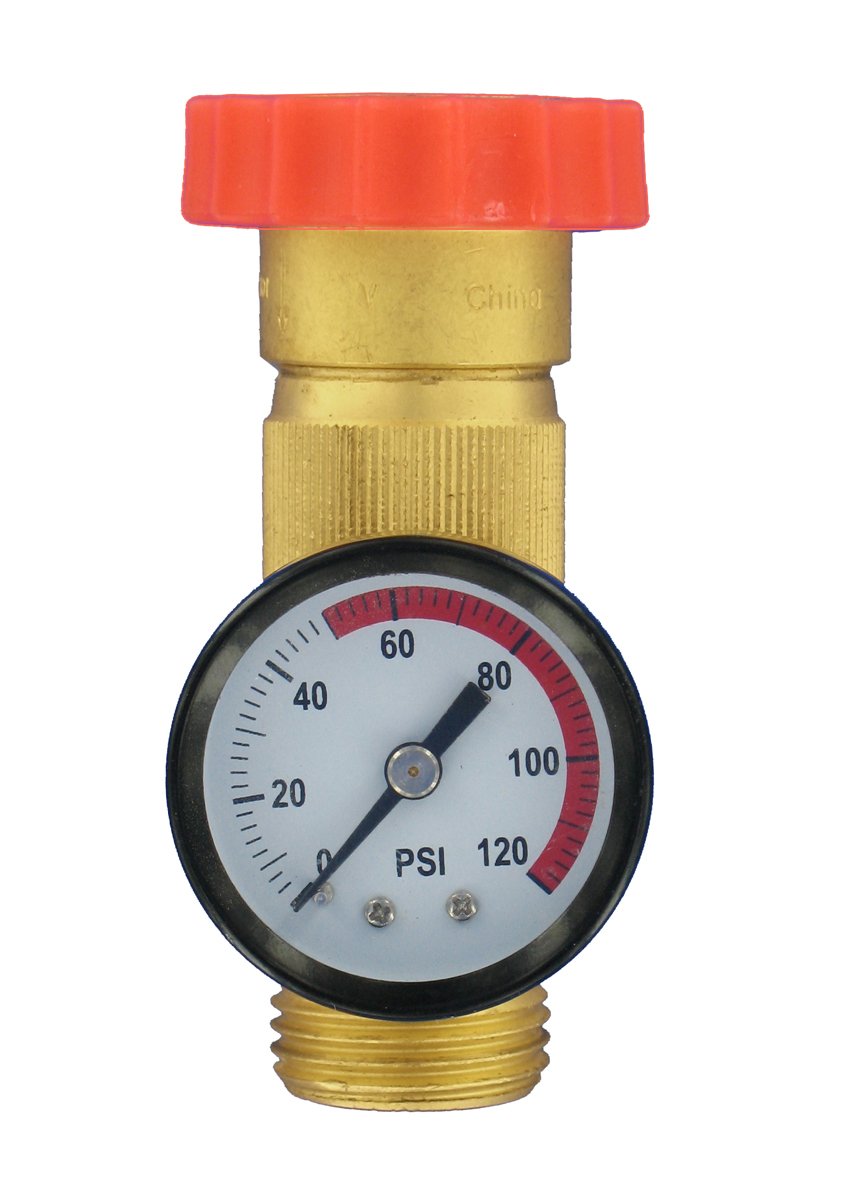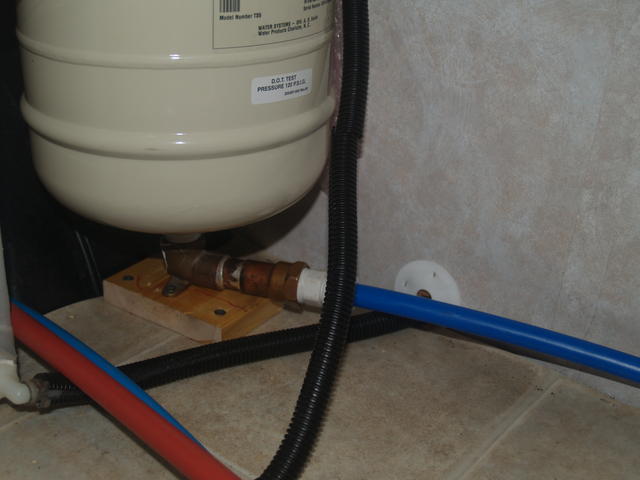Forum Discussion
36 Replies
- garyemunsonExplorer IIAs for thermal expansion and the regulator acting as a check valve, all RVs I've seen for the last 20 years have a check valve right at the hose connection so you already have a 'closed system'. If not for that check valve, if you weren't connected to city water, you'd have a stream of water spraying out of the hose connection as soon as you turned on your pump. My experience is that all the $10 regulators, although they do the job, also are very restrictive and make for a really weak shower experience. The good, larger units with the valve seem to pass a much greater volume of water.
- lawrosaExplorer
Fulltimers wrote:
Old-Biscuit you beat me to the punch. Iawrosa says he has been a plumber for 30 years. I am glad he is not my plumber. As I said when I got rid of the plumber that worked on my house, “I guess you don’t have to be too smart to be a plumber.”
Anyway, to answer Grumpy2day’s question, like all the others have said here, it goes on the spigot side.
Thats how it works in residential applications. Ive been on 1000's of calls for failed exp tanks on closed loops systems. On arrival the relief valve of water heaters spewing all over the place.
Why would a RV be any different?
Why do you think your relief valve weeps in your RV? Mine does when water is heating..
You can flame me all you want. I have thick skin... Im just bringing up a valid point..
I did fail to realize there is a spring check in the water inlet:E
More so why a accumulator or exp tank is beneficial... - FulltimersExplorerOld-Biscuit you beat me to the punch. Iawrosa says he has been a plumber for 30 years. I am glad he is not my plumber. As I said when I got rid of the plumber that worked on my house, “I guess you don’t have to be too smart to be a plumber.”
Anyway, to answer Grumpy2day’s question, like all the others have said here, it goes on the spigot side. - rhagfoExplorer IIIIn one park we hosted at had backflow devices on the end of the spigot, at times the filter screen on the pressure regulator interferes with the operation of the backflow device stopping water flow. I put mine on the trailer supply side of the Y.
- Rover_BillExplorer II
lawrosa wrote:
Let me ask ya all..
When your water heater heats up, how much pressure does it increase you rv's plumbing from thermal expansion???
becuase when you add these pressure regulators they act as a check valve. Now you make your water system a closed system... So the thermal expansion has no where to go. So when heating hot water you can build PSI in the camper up up up to way over 100 psi..
Without the reducer/.check valve the expansion will push back to the campground water system..
Since you asked...
Newer RV's have a backflow check valve installed at the city water connection. Without that valve, your water pump could pump the water from your FW tank back into the CG system. Not nice.
Also even though water lines have a high pressure rating they connect to the system via untested fitting. Excessive pressure in the line might not burst the line but will usually cause a fitting to spring a leak or come apart flooding the trailer.
CG don't guarantee their water pressure so having a cheap $10 pressure regulator attached to the CG spigot is very cheap insurance. - old_guyExplorerI made the mistake of putting it on the TT inlet and the next morning my hose looked like it swallowed a rabbit, so always put it on the faucet
- lawrosaExplorer
Old-Biscuit wrote:
Have been in campgrounds that WARNED of HIGH Pressure
Have been in campgrounds that had as HIGH as 120 PSI in system
Have seen potable water hoses that looked like a python that just swallowed a pig.....and then burst
Ive never seen it... Usually painfully low pressure due to everyone using water..
RV Plumbing system is already a closed system......city water inlet has a check valve that prevents backflow of water from RV to City Water
Not all.. Its a code thing. I think most would use booster pumps if anything as you couldn't get 80 psi to 100 campsites. But the booster pumps are good at regulating the pressure. Im sure they are connected to large storage tanks. This is where checkvalves would be added.
PEX can handle HIGH pressure...even deals very well with freezing temps.
Fittings used in RV Plumbing system connections..not so much
I have the same pex pipe and cinch fittings in my rv that I use when I pipe homes. And the same type sink/toiler supply threaded adapted. No different.
RV water heaters....air pocket designed into tank to control pressure increases due to swelling of water when heated
Residential water heaters have same air pocket .....air gap in top of tank that is above the water line due to location of HOT Out Dip Tube
Thats the dip tube sife. The hot side is not subject to said air gap as its a direct port ontop. Yes RV heaters are side port, and although there may be an air game I would think its harley sufficient size
In a proper expansion tank there is a bladder and thats filled with air. The air must be set at or near the incomming psi from the street.
A resting air gap cannot accomplish the same..
Just my thoughts.
My thoughts as well. - Old-BiscuitExplorer IIIHave been in campgrounds that WARNED of HIGH Pressure
Have been in campgrounds that had as HIGH as 120 PSI in system
Have seen potable water hoses that looked like a python that just swallowed a pig.....and then burst
RV Plumbing system is already a closed system......city water inlet has a check valve that prevents backflow of water from RV to City Water
PEX can handle HIGH pressure...even deals very well with freezing temps.
Fittings used in RV Plumbing system connections..not so much
RV water heaters....air pocket designed into tank to control pressure increases due to swelling of water when heated
Residential water heaters have same air pocket .....air gap in top of tank that is above the water line due to location of HOT Out Dip Tube
Just my thoughts. - lawrosaExplorer
- lawrosaExplorerI used to put it on the camper side. Why reduce pressure the full length of a 25 ft hose. That hose ain't going to burst..
And by the way im a plumber 30 years ... AFAIK all potable water systems must have an 80 psi regulator. Just like a home to code..
And pex in the new campers is rated min. 160+ psi.
200°F at 80 psi
180°F at 100 psi
74°F at 160 psi
I have never been to a campground with high pressure.
Its urban ledgend from the old camper days with old quest pipe that got brittle from the hot and cold temps.
But I got suckered into the hype. And I should know better in my trade
I put a cheapo 55 psi camco inline but stopped using it with the new camper.
Here is the scam. The red line reads high # 50 psi here...LOLOL ha ha ha..
Let me ask ya all..
When your water heater heats up, how much pressure does it increase you rv's plumbing from thermal expansion???
becuase when you add these pressure regulators they act as a check valve. Now you make your water system a closed system... So the thermal expansion has no where to go. So when heating hot water you can build PSI in the camper up up up to way over 100 psi..
Without the reducer/.check valve the expansion will push back to the campground water system..
Just like in a home when this occurs expansion tanks are installed near the water heaters for this purpose. Whenever a pressure reducing valve is put on the homes system.
Same as an RV.
Anyones relief valve on their water heaters weep/drip? Now you know why....
Remove the PRV/checkvalve, or ass a accumulator exp tank.
Just my thoughts is all...;)
About Technical Issues
Having RV issues? Connect with others who have been in your shoes.24,288 PostsLatest Activity: Jan 09, 2022